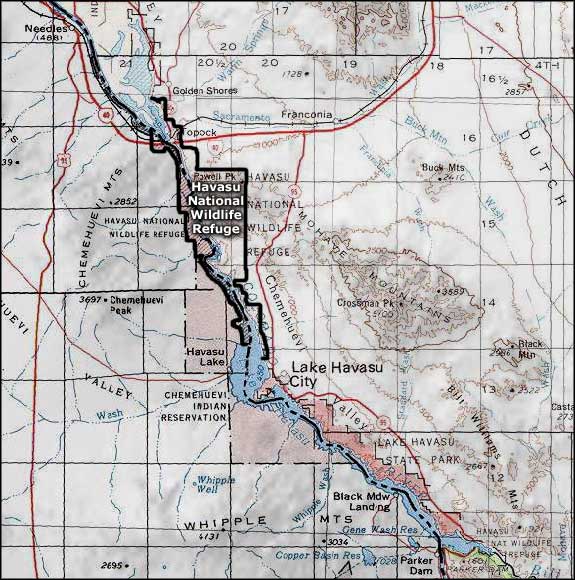
Havasu Wilderness

The volcanic peaks in the distance are in the Havasu Wilderness
In 1941, the federal government designated the Havasu National Wildlife Refuge along 24 miles of the Colorado River between Lake Havasu City and Needles. Most of the Refuge was on the Arizona side of the river. In 1990, Congress designated the Havasu Wilderness on about 1/3 of the Refuge on the Arizona side, and in 1994 amended the designation to include acreage on the California side. Today, the Arizona portion of the Havasu Wilderness includes some 14,606 acres while the California portion includes about 3,195 acres. Havasu Wilderness is managed by the United States Fish & Wildlife Service.
Along the Colorado River corridor, this area is lush with desert vegetation and wildlife. You'll find coyotes, bobcats, porcupines, foxes, and desert bighorn sheep. The air is filled with geese, ducks, quail, grebes, rails, cranes, egrets, herons, eagles, falcons, and myriads of other migratory birds in season. In your hiking around here you may even come across Gila monsters and the endangered desert tortoise.
Hikers can journey through landscapes littered with paloverde, ocotillo, creosote bush, and giant saguaro. You'll find everything from volcanic spires and sand dunes to riparian wetlands and Mojave Desert uplands. Camping is allowed only along the river shoreline below the bouy designating the southern entrance to Topock Gorge. No fires are allowed anywhere.

Havasu Wilderness area map
